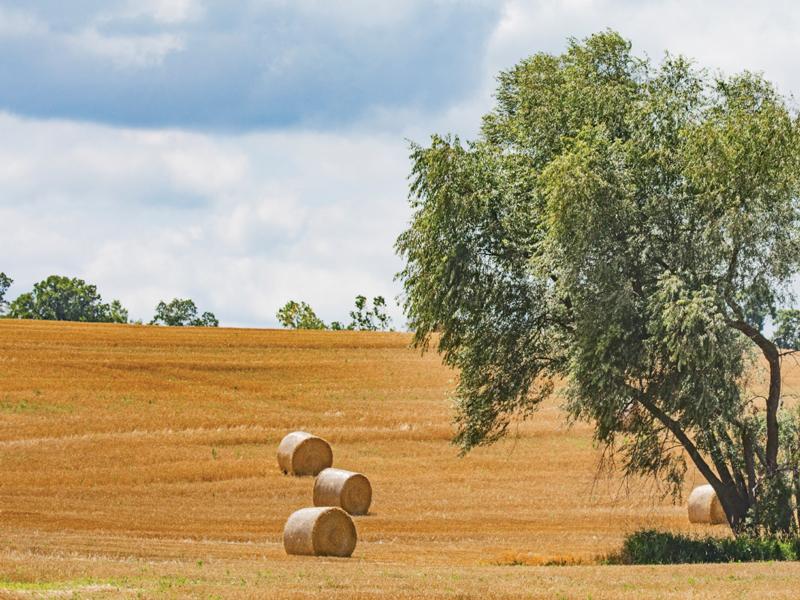During the summer and into the fall, some pastoral landscapes around Ann Arbor are picturesquely, although often fleetingly, punctuated with big round bales of hay or straw. In others, you might spy a wagon stacked high with much smaller rectangular bales.
According to a sign on the barn, Broadview Farms on Stone School Rd. dates to 1912. It’s been in the McCalla family for generations. Dave McCalla took time out from his hay harvest to explain that this field was planted in a mix of grasses and alfalfa specifically designed as feed for horses. Different mixes are grown for feed for beef cattle, dairy cattle, and other livestock.
Hay uses the whole plant. Straw is a byproduct, the stalks left over when grains such as oats or barley are harvested. Straw has multiple uses, the most familiar being animal bedding.
One of our images shows the type of baler used to bind small “square” bales, the other the big cylindrical ones. The former was being used by the McCallas in their hayfield along Morgan Rd. The latter was at work on a Frutig Farms hayfield adjacent to Scio Church Rd. west of Zeeb.
The landscape that includes a storage barn shows the Frutig Farms hayfield; the other, taken last August, shows round straw bales scattered around a field near the intersection of Scio Church and Wagner. Straw bales are, of course, straw yellow; hay bales, have a greenish tinge.
All balers are not alike. Broadview’s lifts the bales onto a flatbed wagon, where the farm team stacks them by hand. We saw another farmer using a square baler with an attachment that just tossed the bales into a high-sided wagon.
Both straw and hay can end up in big round bales, little round bales, big square bales, or little square bales. Dave McCalla explains that the choice comes down to the needs of the customers. Horse owners generally want the small square bales. Customers who raise beef cattle typically want the big rounds.
Broadview’s first hay cutting is usually in early June, with second and third cuttings following about a month apart, if there has been enough new growth. All the cutting and baling is usually done by the end of August.
Weather plays a huge part in dictating the timing of a harvest. This year’s wet weather caused Broadview to delay starting its hay harvest until the end of June. To a farmer, “make hay while the sun shines” is a literal commandment.
At Broadview, hay harvesting takes three days. On the first, the hay is cut with a Haybine mower-conditioner. On the second, the mowed hay is aerated with a tedder. On Day Three, it’s raked into low mounded windrows, then baled.
In this area, the majority of round hay and straw bales and, typically, all squares are moved sooner or later from the fields into barns or otherwise sheltered from the elements. But while in the fields, bales add beauty to farm landscapes.


